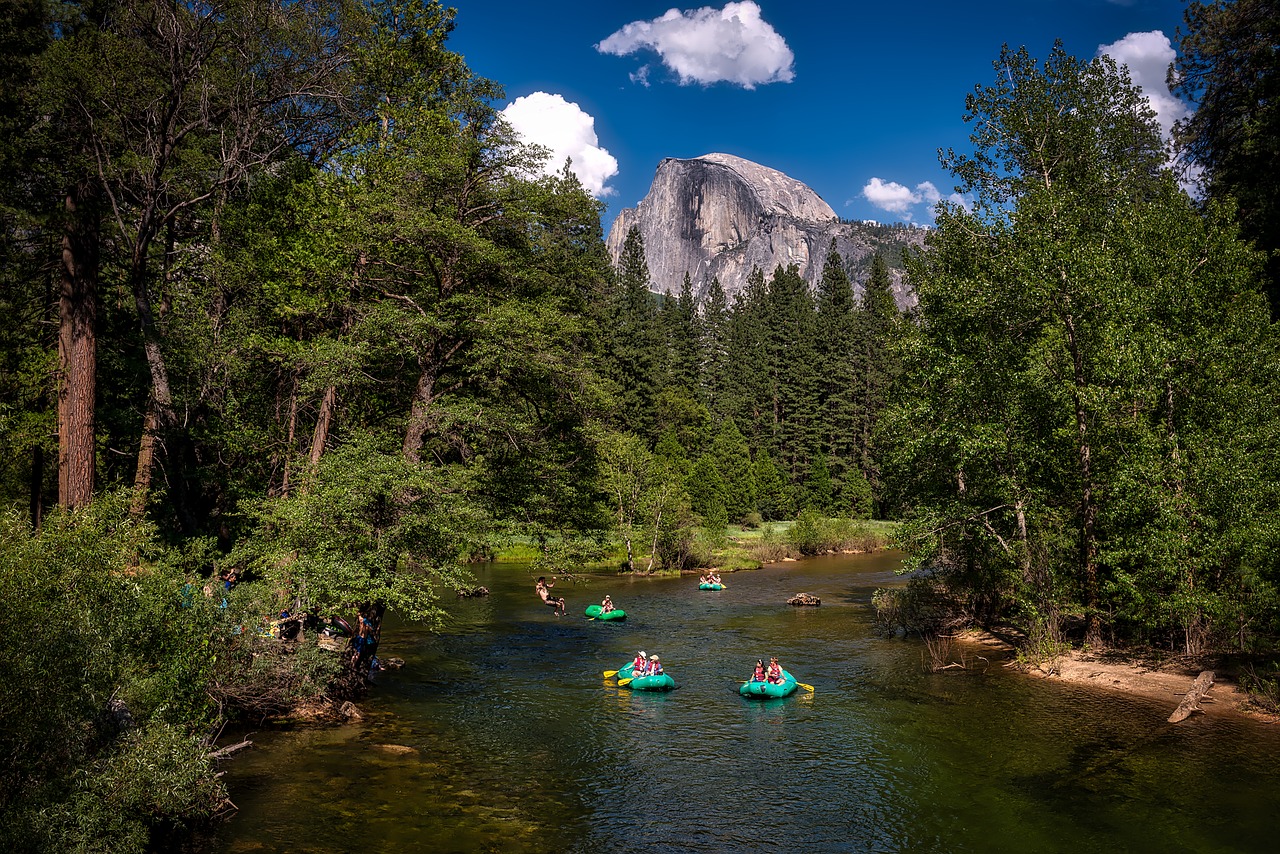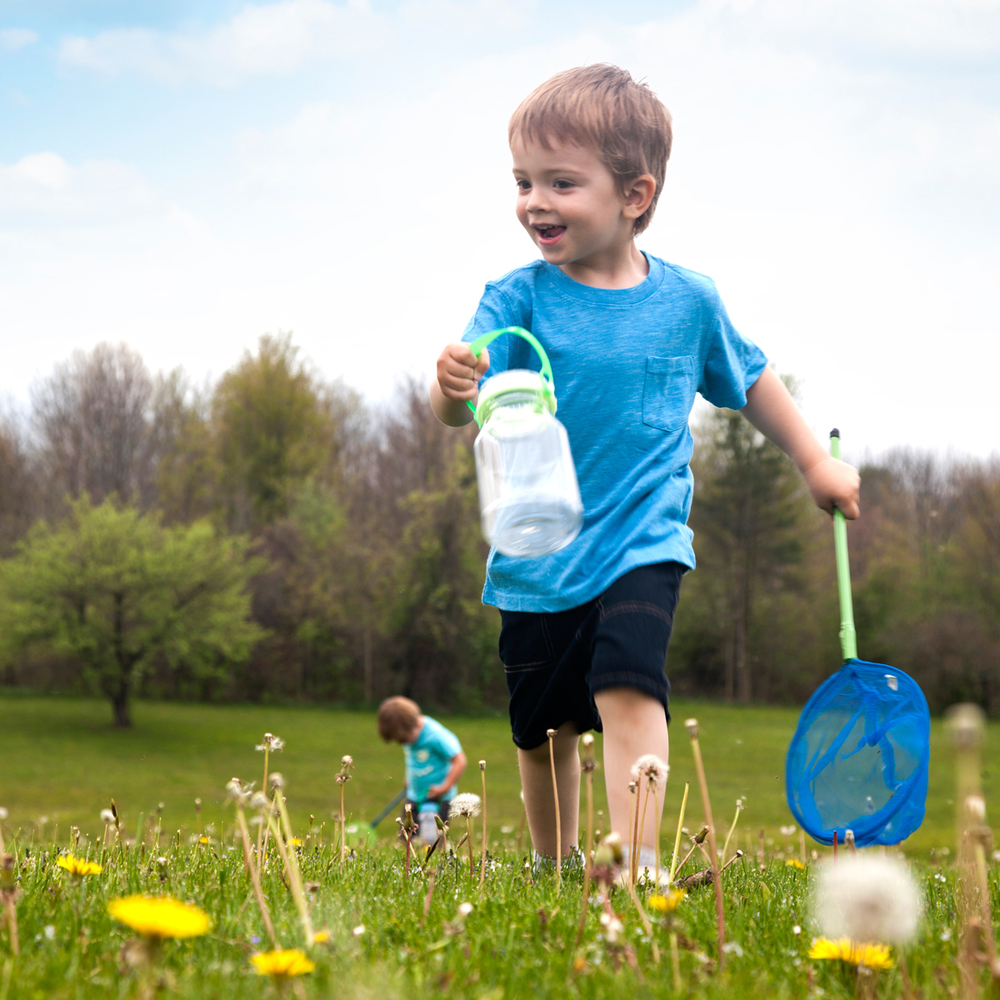
For the Children
by Gary Snyder
The rising hills, the slopes,
of statistics
lie before us.
the steep climb
of everything, going up,
up, as we all
go down.
In the next century
or the one beyond that,
they say,
are valleys, pastures,
we can meet there in peace
if we make it.
To climb these coming crests
one word to you, to
you and your children:
stay together
learn the flowers
go light
Gary Snyder, an environmental activist and poet, offers wise advice behind our motivation for saving, conserving, and preserving nature:
“Don’t feel guilty [about the state of the world]. If you start to care for the environment because you feel guilt, your care for it will be unsustainable. If you’re going to save it, save it because you love it.”
Don’t save it because you feel guilty. Save it because you love it.
How do we inspire our children to love nature?
Children must experience nature in order to want to protect it out of love. As adults, it is our duty to provide children of all ages with these opportunities, even if we aren’t comfortable with mud and bugs ourselves.
According to the National Association for the Education of Young Children:
Being surrounded by nature and natural items provides infinite benefits to children. Nature instills in everyone a sense of beauty and calmness. It exposes us to things that are alive and growing and promotes curiosity and exploration. With an adult as a guide, children can learn about being gentle and respecting living things. Self-esteem can thrive outdoors because nature doesn’t judge people. At a time when bullying is prevalent—even in preschools—exposure to nature can help remind children that the world contains an infinite variety of things and all are important. To observe nature requires patience and quiet watchfulness. ((https://www.naeyc.org/tyc/article/connecting-young-children-with-nature))

1. Visit a national park:
Last year, my daughter and I visited the Grand Canyon. We kept exclaiming, “It’s so grand!” Our national parks are special places. You can experience them on different levels. Even though I am an avid backpacker, I’ve been enjoying staying in the historic lodges of our national parks. Remember to book way far in advance!
2. Commit to weekly adventures in a local park or beach
No matter where you live, there are green spaces available to explore. City parks, botanical gardens or beaches may not provide the isolation of national forests and wilderness areas, but nature doesn’t have to be experienced in isolation to create a love for it. Set aside part of every week for nature. It can be a brief walk or an afternoon picnic. The possibilities are limitless. What is important is making this a regular part of your children’s routine.
3. Garden
Growing food connects humans to nature. Without the marvel of seed sprouting, we would starve. From a full-fledged garden to simple potted cherry tomatoes and basil, children love to graze on homegrown food. Nature involves not only wild spaces hardly touched by humans but human manipulation of nature that supports life.
 4. Watch nature shows on tv, especially Planet Earth
4. Watch nature shows on tv, especially Planet Earth
The beauty of the earth is diverse. Most of us will never travel to see even a fraction of it. Watching shows about nature with your children helps them gain an appreciation for the diverse beauty of our planet. By expression of your own awe as you watch, your children will share in the amazement. I recommend Planet Earth!
5. Experience weather
Whether it’s raining or snowing or sunny, it’s the perfect time to go out. Connecting to nature involves experiencing the weather and the seasons. Observing how a favorite places changes throughout the year builds connection to nature. Of course, remember to stay safe and warm but don’t let rain keep you and your family inside. Get wet!
6. Become a collector: Collect bugs, shells, rocks
It’s common practice in our family to bring back a rock from where we have visited as a gift. Our planters are filled with these geological memories of adventures.
Children naturally like to collect things based on interest. Start a collection with your children.
As a child, I loved catching lightning bugs. When catching bugs, it is important to do no harm to the creatures.
We were sent a ReCap Mason Jars designed for bug catching. These BPA-free, made in the USA plastic kits make it easy to collect and observe insects. I love that the lid is a magnifier!

reCAP Kids EXPLORE Bug Catcher
The first ever glow-in-the-dark, magnifying bug catcher utilizing a Mason jar! The reCAP EXPLORE Bug Catcher’s ‘flip-open’ mason jar lid glows in the dark and has a magnifying cap with breathing holes for your critter friends. A 32oz Mason jar with a convenient carrying handle is included as well as a reCAP EXPLORE Activity Book download.
The reCAP EXPLORE Mason jar lid will fit any Regular mouth Mason jar allowing you the flexibility to choose a glass mason jar that has been passed down through the years, or recycle a plastic jar. Not for canning.
• Glows in the Dark & Magnifies!
• Easy-open Mason jar flip lid with breathe holes for critter friends
• Includes plastic Mason jar and convenient carrying handle
• FREE Activity Book download with purchase
• Made in the USA!
• Award-winning: Creative Child Magazine awarded reCAP EXPLORE the Product of the Year Award in the Educational Science Products category.
• Eco-friendly: We support 1% for the Planet and pledge to donate 1% of reCAP EXPLORE sales to participating organizations like Environment Erie.
7. Emphasize and wonder at the beauty of nature: Stop and see the rainbows
In our family, we stop and take in the rainbows. It’s a valid excuse for being late to school.
Noticing, emphasizing, and wondering about natural phenomena builds a connection and love of nature. Alice Walker wrote in The Color Purple:
I think it pisses God off if you walk by the color purple in a field somewhere and don’t notice it. People think pleasing God is all God cares about. But any fool living in the world can see it always trying to please us back.
Teach your children to notice the color purple.
8. Read nature-based literature
There are many nature-based books written for all ages. Many of these books leave lasting imprints on children well into adulthood. My Side of the Mountain, for example, has inspired many children to wonder what it would be like to live in the woods alone, to learn survival skills, and to appreciate nature. These books becomes books you can’t wait to read aloud to your own children.
Here’s a list of ten of my favorite nature-based books for children:
- The Lorax
- Julie of the Wolves
- The Island of the Blue Dolphins
- My Side of the Mountain
- Hatchet
- The Sign of the Beaver
- Call it Courage
- The Yearling
- The Call of the Wild
- Naya Nuki
 9. Be impulsive with nature
9. Be impulsive with nature
In addition to setting aside weekly time for nature outings, it is important to recognize the ever-changing nature of nature to amaze and wonder us. When a perfect sunset or sunrise is occurring, drop everything and go outside. If you live near the beach, go! Hike to the top of a hill on a full moon. Play in the welcoming rains after a drought or spell of hot weather. Build a snow man or go sledding after a big storm.
Not only does impulsive action inspired by nature instill a love of it, it can be very energizing. Children will return to their mundane tasks, like homework, with vigor after taking a nature break.
10. Find nature wherever you go/are
Nature is everywhere, even in the concrete jungle. Pointing out where little wildflowers grow in cracks in sidewalks or grass sprouting on the roof of a phone booth brings our children’s awareness and attention to the life around them. Visiting parks when traveling to cities is a cultural experience. Observing the difference between Golden Gate Park in San Francisco to Boboli Gardens in Florence, Italy, one can see how urban planners have dedicated green spaces to city life.
11. Go camping/backpacking, glamping
If you have never been camping before, it may seem like a daunting task to get the gear and take your family. There are many places that offer tent and gear rentals or you may have friends that will loan you their supplies. Camping, whether it is car camping, glamping, or backpacking, creates life long memories in children. It is fun to sleep in a tent or under the stars. To be outside for continuous hours is not something most children get to experience. This duration creates a lasting love of nature and desire for preservation and conservation.
12. Look at the stars/the moon
Nature activities are not just for day time. Flashlight hikes are fun, and many state parks offer guided ones. Simply taking the time to notice the phases of the moon, learn some constellations, and gaze at the Milky Way helps children gain perspective on their lives. When we gaze at the infinite universe, our small self comes into perspective, even if just for a moment. Nature exists 24 hours. Darkness brings colder temperatures and different sounds. Helping children feel comfortable outside at night builds a sense of ease in nature during the day. The spiders and snakes become less scary after gazing at the stars.

Sadly, children, today experience far less unstructured outside play time than their parents. According to the Natural Wildlife Federation:
On average, American children spend four to seven minutes each day on unstructured outdoor play, in contrast to the more than seven hours spent in front of an electronic screen.((http://blog.nwf.org/2012/04/getting-kids-outside-to-inspire-a-love-of-nature/))
Research has shown that children who spend time in nature benefit “in the general areas of health, well-being, cognitive processes, social skills, emotional/behavior issues, and ethics/attitude towards the natural world”:
- “Spending time in natural areas as a child is associated with adult pro-environmental attitudes and feelings of being connected with the natural world, and is also associated with a stronger sense of place.
- Living nearby green spaces is associated with greater physical activity.
- Spending time in nearby nature leads to improvements in mental health and emotional regulation, both for specific groups of children (such as those with ADHD) and children as a whole.
- Children who take part in school gardening projects improve in scientific learning more than those who do not, and have healthier eating habits.
- Experience of green environments is associated with greater environmental knowledge.
- Play in natural environments leads to improvements in motor fitness for pre-school children.”((https://www.childrenandnature.org/research/playful-styles-of-nature-engagement-yield-multiple-benefits-for-children-2/))
It’s important to provide our children with opportunities to interact with nature.
Bessi / Pixabay
Leave a Reply